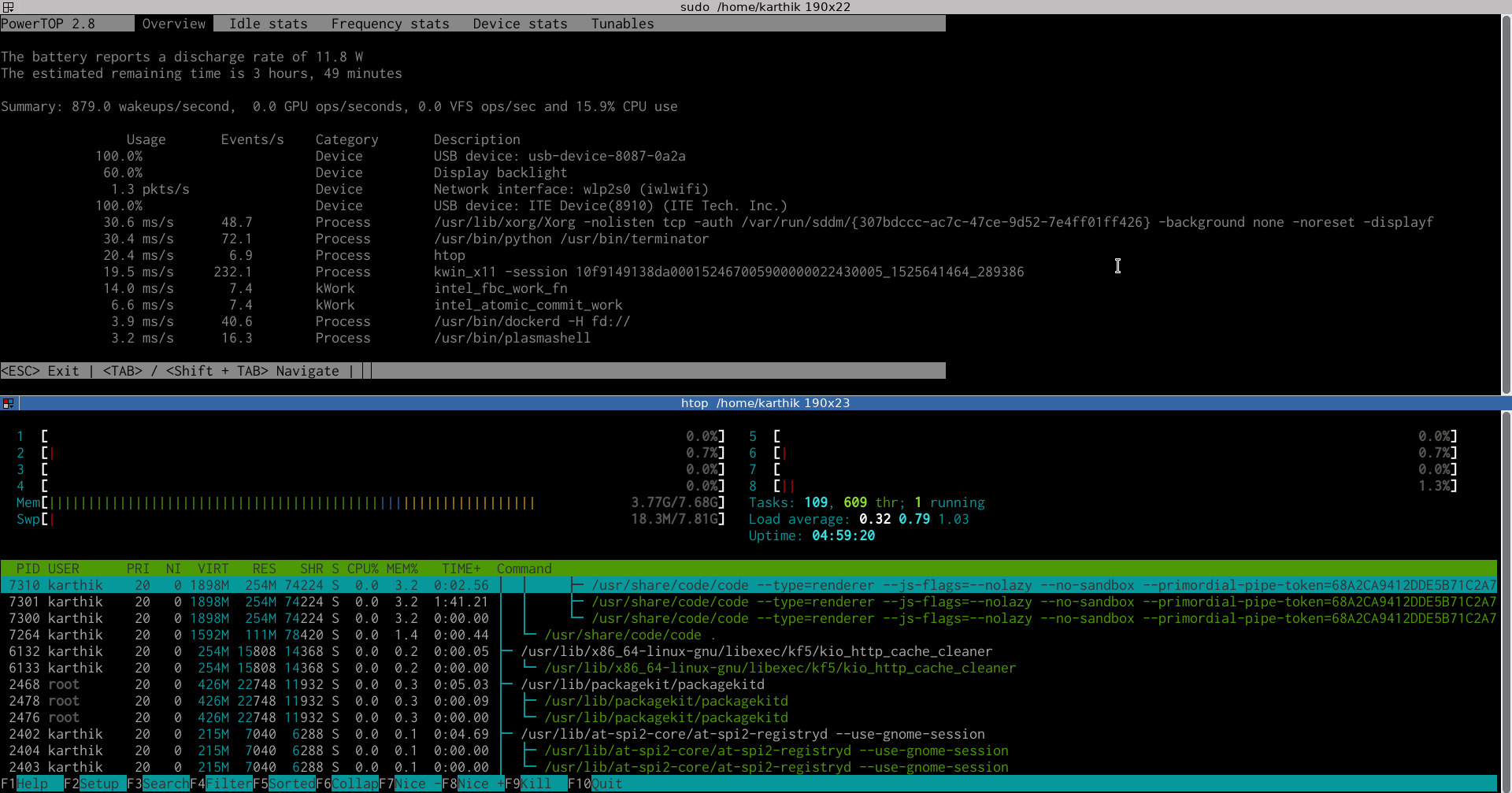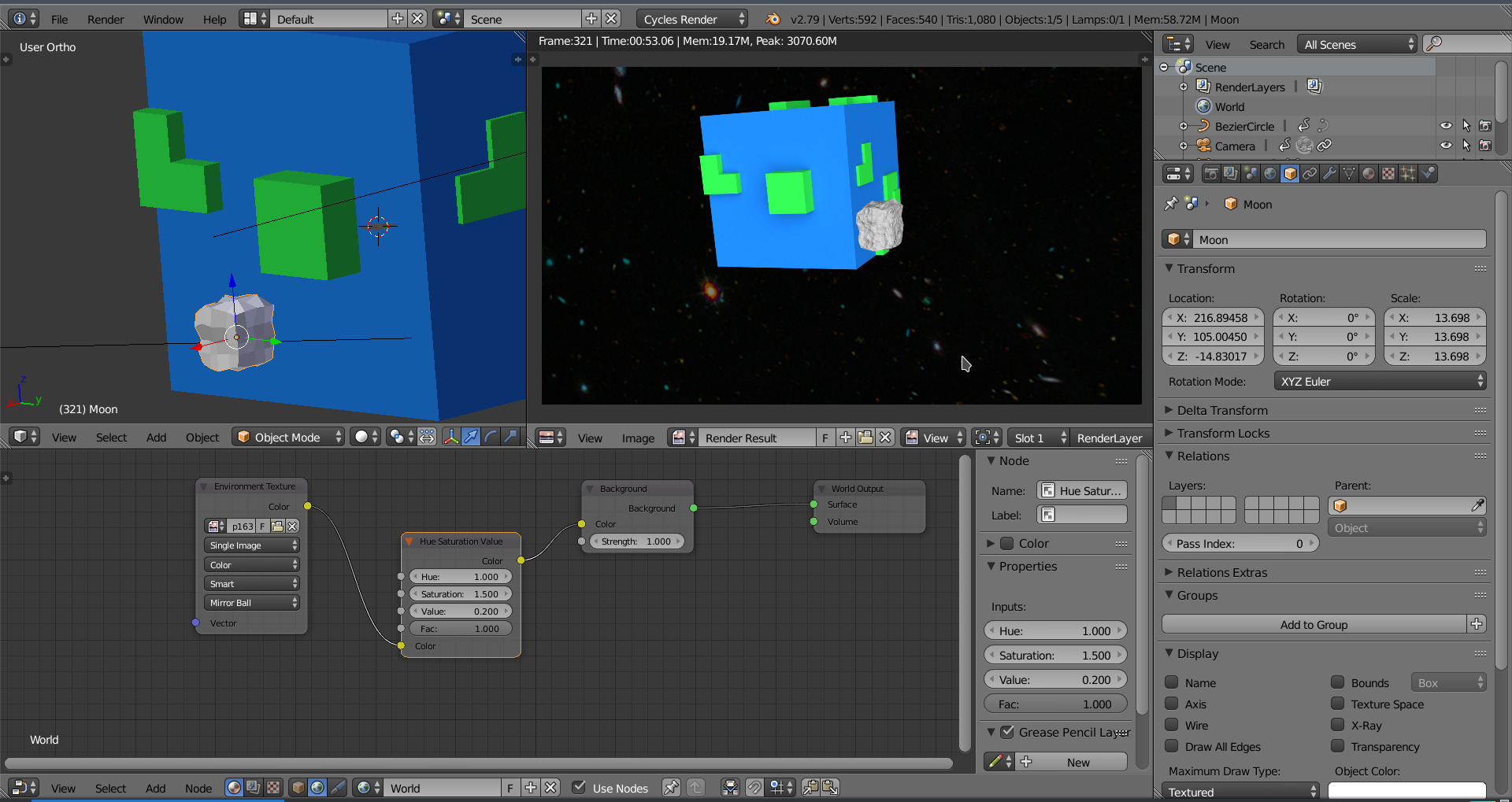ASUS FX553-VD: A year with an entry-level gaming laptop
I realized its been a little over a year since I purchased my ASUS FX553-VD laptop(which happens to be my first), and I’ve decided to write about my experience with it. I’ve used this various tasks over the year, including gaming, programming, deep learning, and 3D creation. Most of my usage is with Linux. I’ll be covering how this laptop fares across all these tasks with my workload.
This is an entry level gaming laptop with an Intel Core i7 7700HQ, 8GB RAM, NVIDIA GeForce GTX 1050 with 2GB of VRAM, and a 1TB hard drive. You can check out the full specs here. There is no DVD drive present, so you can plug in any SATA device to that slot. I purchased a Samsung EVO 250GB SSD 10 months after purchasing the laptop for that oh-so-sweet boot time. The laptop comes pre-installed with an education focused Linux distro called EndlessOS. I wiped it out on the first day to setup a dual boot with Ubuntu and Windows, so I won’t go into any details about EndlessOS.
Gaming
I don’t game on Linux at all, so games are pretty much the only reason I keep Windows around. I played a couple of games on this laptop, and the experience was mostly pleasant. I don’t know how well the GTX 1050 will fare a year from now, however.
Doom

Doom ran very well. I used the Vulkan drivers. I played at 1080p 60fps and it was a great experience. I had to turn some of the settings down to achieve this though, but it still looks good. It was a little disappointing that Wolfenstein II: The New Collosus didn’t perform as well.
Dark Souls 3

Another game that looked and ran pretty well. I played Dark Souls 3 at 1080p 60fps, with some of the graphic settings reduced.
I played a few other games which ran decently, including:
- Batman Arkham Knight
- FIFA 18
- Battlefield 1
I had to reduce the graphic settings a bit to play Planet Coaster, however.
I didn’t use this laptop for gaming as much as I thought I would, and I’ve been gaming on it even less since I purchased a Nintendo Switch.
Gaming on battery power is a joke. You get upto half an hour of game time, and the performance starts to drop badly. Its just enough to save your progress and close the game, if anything. The laptop heats up a lot during gaming sessions. The keyboard remains comfortable to use, since the vents dissipate all the heat to the side. Also be warned: the fan is VERY noisy.
Linux & Programming
Setting up Ubuntu on this device was a huge pain thanks to the lack of decent hybrid GPU support. I needed to be able to switch between the power efficient Intel GPU and the faster but battery guzzling NVIDIA GPU. Simply installing the drivers would get NVIDIA working, but upon switching to the Intel GPU, the laptop wouldn’t boot. I wrote a fix for this via modifying the ACPI, but this is far less than ideal. I still have to reboot everytime I want to switch the GPU, and if I resume from suspend while using the Intel GPU, there is a huge power draw. Getting the GPU to play nice has been a horrendous experience. I currently have a working setup(with the aforementioned issues, of course) with Kubuntu 17.10, the nvidia-375 drivers and CUDA 8.1 installed. In contrast, things on Windows “just worked”, with per-app GPU settings. ASUS should have invested more effort into this, especially considering they released it with a Linux distro.
Running a recent kernel(>4.15) gets the keyboard backlight control and other function keys working.
This has been a great device when it comes to working with code. The 1080p display is very crisp, and the backlit keyboard is very tactile. The quad core CPU, along with the 8GB of RAM allows you to chug through most tasks effortlessly. I’ve had a vagrant machine up, vscode open, several tabs of Mozilla Firefox with documentation open, and the Spotify client running at the same time without any issues. There were times when I felt more RAM would be useful, particularly when building large codebases such as the moby project from source. The build takes too much RAM, and the OS starts using swap space. This isn’t much of a problem since most builds are done on remote servers anyway, but an additional 8GB of RAM would be very nice. There is a free RAM slot, so this is an upgrade I’ll do at some point.
The subpar battery life brings things down. 34 hours of battery life is abysmal, and I find myself almost always keeping the charger nearby. The laptop draws about 1012W even when idle, with the NVIDIA GPU disabled:

The battery situation is slightly better on Windows, but not by much.
Adding an SSD was a life-changer. Everything suddenly felt really quick: the boot time and startup time of applications. If you are purchasing a laptop which you’ll mostly use for software development, I strongly suggest you get something with an SSD.
Deep Learning
I had intended to use this laptop to follow through deep learning courses, and train my custom models. A little research beforehand would’ve saved me quite some trouble though. The 2GB of VRAM is grossly insufficient for training anything beyond simple toy models. The GPU was sufficient to work through the Stanford CS231n course, and a couple of small projects. But loading something like the Resnet-50 architecture fails due to lack of memory. This has made using the GPU for anything other than toy models unusable. If you intend to work with deep learning, I’d suggest buying a cheaper laptop and paying for a GPU enabled machine on Paperspace or AWS EC2. A free alternative is Google Colaboratory, which gives you upto 12 hours of uninterrupted GPU usage at a stretch. You can always start a new server after 12 hours and continue to use it!
In terms of software, I have run theano, tensorflow, pytorch and caffe with no issues.
3D Creation
I have started learning Blender, a wonderful open-source project for 3D creation (If you’ve got time to spare, watch this interview with Ton Roosendaal, the creator of Blender). I have worked with sculpting 3D models with 8 levels of subdivision without any lag. The Cycles render does take a lot of time to render frames though, even with CUDA rendering enabled. A simple scene at 1920x1080 with a single light source, and around 4 different very simple meshes takes about 20 seconds to render, with the low sample rate of 32 and denoising turned on. I have yet to experiment with Blender’s new renderer, Eevee.

The laptop performs fairly well when working with Blender. Simple modelling and animating don’t tax the laptop too much. It does get fairly slow when dealing with simulations with >1000 rigid bodies. I’ll revisit this part of this post once I have more experience with using Blender.
Conclusion
Overall, I haven’t seen much value in owning a gaming laptop, with my usage patterns. It would’ve made more sense to buy a mid range laptop with good battery life, and build a decent PC for gaming, 3D creation and deep learning. The portability with this laptop is very minimal, considering it weighs 2.5kg, and the battery barely lasts 4 hours. I should have approached this with a better idea of what to expect from a gaming laptop at this budget.